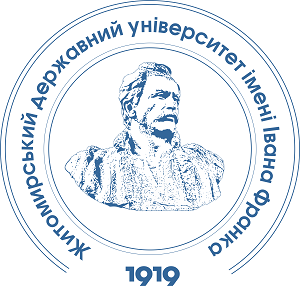PRODUCTIVITY OF WINTER WHEAT VARIETIES DEPENDING ON THE LEVEL OF NITROGEN FERTILIZATION IN THE SOUTH OF UKRAINE
DOI:
https://doi.org/10.32782/naturaljournal.12.2025.27Keywords:
winter wheat, varieties, nitrogen fertilization rates, yield, grain qualityAbstract
In the current agricultural conditions of Ukraine, particularly in the southern region, where there is instability in climatic conditions, droughts, soil moisture deficits, and high temperatures, there is a need to improve the technologies for growing winter wheat, the leading cereal crop. Rational use of mineral nutrition, especially nitrogen fertilizers, is a key factor determining the yield level and grain quality.However, current practices show that general approaches to fertilization often do not take into account the varietal characteristics of crops, their response to nitrogen nutrition, and adaptability to the specific conditions of the region. In this context, it is crucial to determine the optimal level of nitrogen fertilization for widely used varieties of winter wheat that can ensure maximum productivity in the conditions of Southern Ukraine.The aim of the research is to establish the impact of different levels of nitrogen fertilization on the productivity of widely used varieties of winter wheat in the agro-climatic conditions of the southern region of Ukraine, with the goal of determining the most effective agronomic practices to increase yield and improve grain quality.The methods of problem analysis included field studies on experimental plots with the application of different nitrogen fertilizer rates (from zero background to increased modern doses), analysis of biometric indicators of plants, determination of yield, and laboratory analysis of the quality indicators of the grain. Statistical processing of the results was carried out using the method of variance analysis to determine the reliability of the obtained data.The research results showed that the level of nitrogen fertilization has a significant impact on the formation of winter wheat yield. It was found that for certain varieties, optimal nitrogen doses are medium rates (N30), which provide high yields under moderate moisture conditions. With an increase in the fertilizer dose to N60, there is an increase in protein content and grain density indicators, but the economic efficiency of this dose needs to be verified. The best results for productivity and grain quality were demonstrated by varieties that combine high potential yield and adaptability to stressful conditions.The scientific novelty lies in identifying the varietal-specific response to the level of nitrogen fertilization in the non-irrigated conditions of the Southern Steppe of Ukraine, which allows for a differentiated approach to fertilization based on the biological characteristics of the variety. The research also allowed for identifying optimal “variety – fertilization level” combinations that provide the highest efficiency in terms of yield and quality.The practical significance of the results lies in the fact that they can be directly applied in the production practices of agricultural enterprises in the southern region of Ukraine, especially now when the area of irrigated land has been rapidly decreasing. The proposed nitrogen fertilization rates not only allow for obtaining consistently high yields but also ensure the economic feasibility of using mineral fertilizers, reducing production costs, and increasing the competitiveness of the product.
References
Влащук А.М., Марченко Т.Ю., Дробіт О.С. Продуктивність пшениці озимої в умовах Південного Степу України. AgroONE. 2020. № 61. C. 30–33.
Золотухіна З.В. Продуктивність та якість зерна інтенсивних сортів пшениці озимої залежно від агротехнічних прийомів вирощування в умовах Південного Степу України. 2015 [Електронний ресурс]. URL: http://elar.tsatu.edu.ua/handle/123456789/7625 (дата звернення: 02.04.2025).
Лубенець В.В. Вплив рівня азотного живлення на формування зернової продуктивності пшениці озимої в умовах фермерського господарства «Агроланка» Синельниківського району Дніпропетровської області. 2021 [Електронний ресурс]. URL: https://dspace.dsau.dp.ua/bitstream/123456789/4236/1/%D0%9B%D1%83%D0%B1%D0%B5%D0%BD%D0%B5%D1%86%D1%8C%20%20%D0%92.%D0%92.%20%28pdf.io%29.pdf?utm_source (дата звернення: 02.04.2025).
Попов Ю. В., Авраменко С. В. Вплив осіннього внесення різних доз та видів азотних добрив на врожайність пшениці озимої після попередника соняшнику. Селекція і насінництво. 2024. № 125. С. 94–101.
Burton A., Lev H.L., Schaad N., Strebel S., Vuille-dit-Bille N., de Figueiredo Bongiovani P., Holzkamper A., Pellet D., Herrera J.M. Evaluating nitrogen fertilization strategies to optimize yield and grain nitrogen content in top winter wheat varieties across Switzerland. Field Crops Research. 2024. Vol. 307. Р. 2–15.
Hu C., Sadras V.O., Lu G., Zhang P., Han Y., Liu L., Xie J., Yang X., Zhang S. A global meta-analysis of split nitrogen application for improved wheat yield and grain protein content. Soil and Tillage Research. Elsevier, September 2021. Vol. 213. https://doi.org/10.1016/j.still.2021.105111.
Martre P., Dueri S., Guarin J.R. Global needs for nitrogen fertilizer to improve wheat yield under climate change. Nat Plants. 2024. Vol. 10 (7). Р. 1081–1090. https://doi.org/10.1038/s41477-024-01739-3.
Subbarao G.V., Kishii M., Bozal-Leorri A., Orits-Monesterio I, Gao X., Ibba M.I., Karwat H., Gonzalez-Moro M.B., Gonzalez-Murua C., Yoshihashi T., Tobita S., Kommerell V., Braun H.J., Iwanaga M. World’s first successful development of wheat that shows high productivity with less nitrogen fertilizer – Use of ammonium to prevent nitrogen pollution and increase food production at the same time. 2021. Proceedings of the National Academy of Sciences of United States of America (PNAS). https://doi.org/10.1073/pnas.2106595118.
Yokamo S., Irfan M., Huan W., Wang B., Wang Y., Ishfaq M., Lu D., Chen X., Cai Q., Wang H. Global evaluation of key factors influencing nitrogen fertilization efficiency in wheat: a recent meta-analysis (2000–2022). Systematic review article Front. Plant Sci., 30 October 2023. Sec. Plant Nutrition. 2023.Vol. 14. https://doi.org/10.3389/fpls.2023.1272098.






